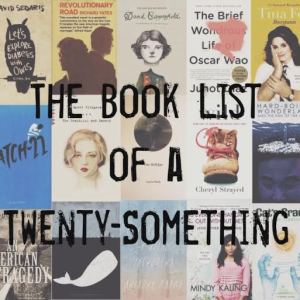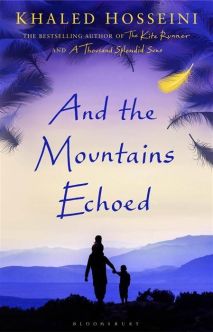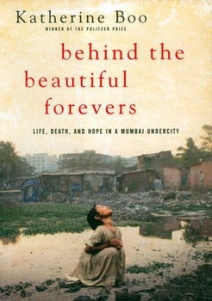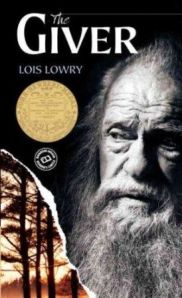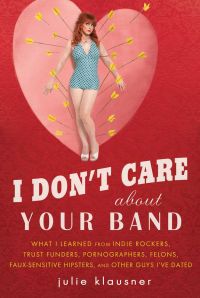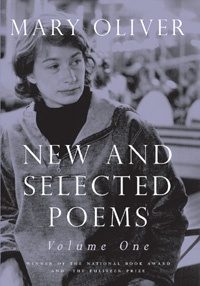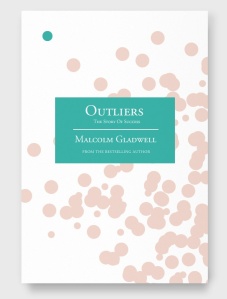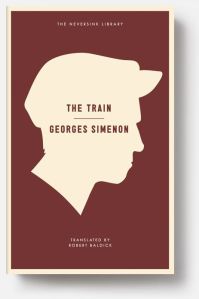Time and it’s rapid persistence have kept me constantly bobbing between clarity and anxiety. In a recent moment of stillness I realized that I have 2,843 days left of being in my twenties; I began to consider, in what ways would I like to have grown by age 30?
Books
is what immediately came to mind. I want to know my classics, discover the best novels of our decade, and fall in love with new authors. In what other time of our lives will we have so much freedom to indulge in 500-1000 page novels, or actually spend time appreciating those books we “read” in high school? So welcome, welcome to The Floral Book Case, a blog dedicated to drafting “the perfect reading list”, with updates on my favorite quotes as well as my thoughts following the completion of each book. Journey with me as I dive into poetry, essays, screenplays, novels, autobiographies, and short stories from authors that range from Charles Dickens to Tina Fey.
And now, without further adieu,
My 20’s Book Bucket List:
1. All The King’s Men, Robert Penn Warren.
More than just a classic political novel, Warren’s tale of power and corruption in the Depression-era South is a sustained meditation on the unforeseen consequences of every human act, the vexing connectedness of all people and the possibility—it’s not much of one—of goodness in a sinful world. Willie Stark, Warren’s lightly disguised version of Huey Long, the onetime Louisiana strongman/governor, begins as a genuine tribune of the people and ends as a murderous populist demagogue. Jack Burden is his press agent, who carries out the boss’s orders, first without objection, then in the face of his own increasingly troubled conscience. And the politics? For Warren, that’s simply the arena most likely to prove that man is a fallen creature. Which it does.
2. An American Tragedy, Theodore Dreiser.
A tremendous bestseller when it was published in 1925, “An American Tragedy” is the culmination of Theodore Dreiser’s elementally powerful fictional art. Taking as his point of departure a notorious murder case of 1910, Dreiser immersed himself in the social background of the crime to produce a book that is both a remarkable work of reportage and a monumental study of character. Few novels have undertaken to track so relentlessly the process by which an ordinary young man becomes capable of committing a ruthless murder, and the further process by which social and political forces come into play after his arrest.
3. And The Mountains Echoed, Khaled Hosseini.
Khaled Hosseini, the #1 New York Times–bestselling author of The Kite Runner and A Thousand Splendid Suns, has written a new novel about how we love, how we take care of one another, and how the choices we make resonate through generations.
4. Atonement, Ian McEwan.
On a hot summer day in 1934, thirteen-year-old Briony Tallis witnesses a moment’s flirtation between her older sister, Cecilia, and Robbie Turner, the son of a servant and Cecilia’s childhood friend. But Briony’s incomplete grasp of adult motives—together with her precocious literary gifts—brings about a crime that will change all their lives. As it follows that crime’s repercussions through the chaos and carnage of World War II and into the close of the twentieth century, Atonement engages the reader on every conceivable level, with an ease and authority that mark it as a genuine masterpiece.
5. The Beautiful and Damned, Scott Fitzgerald.
Embellished with the author’s lyrical prose, here is the story of Harvard-educated, aspiring aesthete Anthony Patch and his beautiful wife, Gloria. As they await the inheritance of his grandfather’s fortune, their reckless marriage sways under the influence of alcohol and avarice. A devastating look at the nouveau riche and New York nightlife, as well as the ruinous effects wild ambition, The Beautiful and the Damned achieved stature as one of Fitzgerald’s most accomplished novels.
6. Behind the Beautiful Forevers, Katherine Boo.
From Pulitzer Prize-winner Katherine Boo, a landmark work of narrative nonfiction that tells the dramatic and sometimes heartbreaking story of families striving toward a better life in one of the twenty-first century’s great, unequal cities.
7. The Bell Jar, Sylvia Plath.
Sylvia Plath’s shocking, realistic, and intensely emotional novel of a woman falling into the grips of insanity.
8. Beloved, Toni Morrison.
Staring unflinchingly into the abyss of slavery, this spellbinding novel transforms history into a story as powerful as Exodus and as intimate as a lullaby. Filled with bitter poetry and suspense as taut as a rope, Beloved is a towering achievement by Nobel Prize laureate Toni Morrison.
9. The Blue Sweater, Jacqueline Novogratz.
The Blue Sweater is the inspiring story of a woman who left a career in international banking to spend her life on a quest to understand global poverty and find powerful new ways of tackling it. It all started back home in Virginia, with the blue sweater, a gift that quickly became her prized possession—until the day she outgrew it and gave it away to Goodwill. Eleven years later in Africa, she spotted a young boy wearing that very sweater, with her name still on the tag inside. That the sweater had made its trek all the way to Rwanda was ample evidence, she thought, of how we are all connected, how our actions—and inaction—touch people every day across the globe, people we may never know or meet.
10. Bossy Pants, Tina Fey.
At last, Tina Fey’s story can be told. From her youthful days as a vicious nerd to her tour of duty on Saturday Night Live; from her passionately halfhearted pursuit of physical beauty to her life as a mother eating things off the floor; from her one-sided college romance to her nearly fatal honeymoon—from the beginning of this paragraph to this final sentence. Tina Fey reveals all, and proves what we’ve all suspected: you’re no one until someone calls you bossy.
11. The Brief, Wondrous Life of Oscar Wao, Junot Diaz.
Things have never been easy for Oscar, a sweet but disastrously overweight ghetto nerd, a New Jersey romantic who dreams of becoming the Dominican J.R.R. Tolkien and, most of all, of finding love. But he may never get what he wants, thanks to the fukú — the ancient curse that has haunted the Oscar’s family for generations, dooming them to prison, torture, tragic accidents, and, above all, ill-starred love. Oscar, still dreaming of his first kiss, is only its most recent victim – until the fateful summer that he decides to be its last.
12. Catch 22, Joseph Heller.
At the heart of Catch-22 resides the incomparable, malingering bombardier, Yossarian, a hero endlessly inventive in his schemes to save his skin from the horrible chances of war. His efforts are perfectly understandable because as he furiously scrambles, thousands of people he hasn’t even met are trying to kill him.
13. The Catcher in the Rye, JD Salinger.
Since his debut in 1951 as The Catcher in the Rye, Holden Caulfield has been synonymous with “cynical adolescent.” Holden narrates the story of a couple of days in his sixteen-year-old life, just after he’s been expelled from prep school, in a slang that sounds edgy even today and keeps this novel on banned book lists.
14. Cat’s Cradle, Kurt Vonnegut.
Told with deadpan humour and bitter irony, Kurt Vonnegut’s cult tale of global destruction preys on our deepest fears of witnessing Armageddon and, worse still, surviving it …
15. The Collected Stories, Ernest Hemingway.
Besides revealing his versatility as a writer and throwing fascinating light on the themes of his major novels – war, love, heroism and renunciation – this new comprehensive collection of Hemingway’s shorter fiction contains many stories which are major achievements in their own right.
16. A Constellation of Vital Phenomena, Anthony Marra.
Two doctors risk everything to save the life of a hunted child in this majestic debut about love, loss, and the unexpected ties that bind us together. “On the morning after the Feds burned down her house and took her father, Havaa woke from dreams of sea anemones.” Havaa, eight years old, hides in the woods and watches the blaze until her neighbor, Akhmed, discovers her sitting in the snow. Akhmed knows getting involved means risking his life, and there is no safe place to hide a child in a village where informers will do anything for a loaf of bread, but for reasons of his own, he sneaks her through the forest to the one place he thinks she might be safe: an abandoned hospital where the sole remaining doctor, Sonja Rabina, treats the wounded. Though Sonja protests that her hospital is not an orphanage, Akhmed convinces her to keep Havaa for a trial, and over the course of five extraordinary days, Sonja’s world will shift on its axis and reveal the intricate pattern of connections that weaves together the pasts of these three unlikely companions and unexpectedly decides their fate.
17. David Copperfield, Charles Dickens.
David Copperfield is the story of a young man’s adventures on his journey from an unhappy and impoverished childhood to the discovery of his vocation as a successful novelist. In the novel he described as his “favorite child”, Dickens drew revealingly on his own experiences to create one of his most exuberant and enduringly popular works, filled with tragedy and comedy in equal measure.
18. East of Eden – John Steinbeck.
Set in the rich farmland of California’s Salinas Valley, this sprawling and often brutal novel follows the intertwined destinies of two families—the Trasks and the Hamiltons—whose generations helplessly reenact the fall of Adam and Eve and the poisonous rivalry of Cain and Abel. Here Steinbeck created some of his most memorable characters and explored his most enduring themes: the mystery of identity; the inexplicability of love; and the murderous consequences of love’s absence.
19. The Fault in Our Stars, John Green.
Despite the tumor-shrinking medical miracle that has bought her a few years, Hazel has never been anything but terminal, her final chapter inscribed upon diagnosis. But when a gorgeous plot twist named Augustus Waters suddenly appears at Cancer Kid Support Group, Hazel’s story is about to be completely rewritten.
20. Fish Change Direction in Cold Weather, Pierre Szalowski.
When his parents split up, and his dad leaves home, a ten-year-old boy begs the sky to help him. The next day an ice storm covers his city. When the power goes out and the temperature drops, people must turn to each other to survive.
21. The Geography of Bliss, Eric Weiner.
Weiner spent a decade as a foreign correspondent reporting from such discontented locales as Iraq, Afghanistan, and Indonesia. Unhappy people living in profoundly unstable states, he notes, inspire pathos and make for good copy, but not for good karma. So Weiner, admitted grump and self-help book aficionado, undertook a year’s research to travel the globe, looking for the “unheralded happy places.” The result is this book, equal parts laugh-out-loud funny and philosophical, a journey into both the definition of and the destination for true contentment.
22. The Giver, Lois Lowry.
Jonas’ world is perfect. Everything is under control. There is no war or fear or pain. There are no choices. Every person is assigned a role in the Community. When Jonas turns twelve, he is singled out to receive special training from The Giver. The Giver alone holds the memories of the true pain and pleasure of life. Now, it is time for Jonas to receive the truth. There is no turning back.
23. The Glass Castle, Jeanette Walls.
Jeannette Walls grew up with parents whose ideals and stubborn nonconformity were both their curse and their salvation. Rex and Rose Mary Walls had four children. In the beginning, they lived like nomads, moving among Southwest desert towns, camping in the mountains. Rex was a charismatic, brilliant man who, when sober, captured his children’s imagination, teaching them physics, geology, and above all, how to embrace life fearlessly. Rose Mary, who painted and wrote and couldn’t stand the responsibility of providing for her family, called herself an “excitement addict.” Cooking a meal that would be consumed in fifteen minutes had no appeal when she could make a painting that might last forever.
Later, when the money ran out, or the romance of the wandering life faded, the Walls retreated to the dismal West Virginia mining town—and the family—Rex Walls had done everything he could to escape. He drank. He stole the grocery money and disappeared for days. As the dysfunction of the family escalated, Jeannette and her brother and sisters had to fend for themselves, supporting one another as they weathered their parents’ betrayals and, finally, found the resources and will to leave home.
24. Gone With The Wind, Margaret Mitchell.
Set against the dramatic backdrop of the American Civil War, Margaret Mitchell’s epic love story is an unforgettable tale of love and loss, of a nation mortally divided and its people forever changed. At the heart of all this chaos is the story of beautiful, ruthless Scarlett ‘O’ Hara and the dashing soldier of fortune, Rhett Butler.
25. Hard-Boiled Wonderland and the End of the World, Haruki Murakami.
A narrative particle accelerator that zooms between Wild Turkey Whiskey and Bob Dylan, unicorn skulls and voracious librarians, John Coltrane and Lord Jim. Science fiction, detective story and post-modern manifesto all rolled into one rip-roaring novel, Hard-Boiled Wonderland and the End of the World is the tour de force that expanded Haruki Murakami’s international following. Tracking one man’s descent into the Kafkaesque underworld of contemporary Tokyo, Murakami unites East and West, tragedy and farce, compassion and detachment, slang and philosophy.
26. Heart of Darkness, Joseph Conrad.
Dark allegory describes the narrator’s journey up the Congo River and his meeting with, and fascination by, Mr. Kurtz, a mysterious personage who dominates the unruly inhabitants of the region. Masterly blend of adventure, character development, psychological penetration. Considered by many Conrad’s finest, most enigmatic story.
27. Housekeeping, Marilynne Robinson.
A modern classic, Housekeeping is the story of Ruth and her younger sister, Lucille, who grow up haphazardly, first under the care of their competent grandmother, then of two comically bumbling great-aunts, and finally of Sylvie, their eccentric and remote aunt. The family house is in the small Far West town of Fingerbone set on a glacial lake, the same lake where their grandfather died in a spectacular train wreck, and their mother drove off a cliff to her death. It is a town “chastened by an outsized landscape and extravagant weather, and chastened again by an awareness that the whole of human history had occurred elsewhere.” Ruth and Lucille’s struggle toward adulthood beautifully illuminates the price of loss and survival, and the dangerous and deep undertow of transience.
28. I Don’t Care About Your Band, Julie Klausher.
I Don’t Care About Your Band posits that lately the worst guys to date are the ones who seem sensitive. It’s the jerks in nice guy clothing, not the players in Ed Hardy, who break the hearts of modern girls who grew up in the shadow of feminism, thinking they could have everything, but end up compromising constantly. The cowards, the kidults, the critics, and the contenders: these are the stars of Klausner’s memoir about how hard it is to find a man–good or otherwise–when you’re a cynical grown-up exiled in the dregs of Guyville.
29. Infinite Jest, David Foster Wallace.
Somewhere in the not-so-distant future, the screwed-up residents of Ennet House, a Boston halfway house for recovering addicts, and students at the Enfield Tennis Academy search for the master copy of a movie so dangerously entertaining that its viewers die in a state of catatonic bliss. Explores essential questions about what entertainment is, why we need it, and what it says about who we are.
30. Is Everyone Hanging Out Without Me?, Mindy Kaling.
Mindy Kaling has lived many lives: the obedient child of immigrant professionals, a timid chubster afraid of her own bike, a Ben Affleck–impersonating Off-Broadway performer and playwright, and, finally, a comedy writer and actress prone to starting fights with her friends and coworkers with the sentence “Can I just say one last thing about this, and then I swear I’ll shut up about it?” In Is Everyone Hanging Out Without Me?, Mindy invites readers on a tour of her life and her unscientific observations on romance, friendship, and Hollywood, with several conveniently placed stopping points for you to run errands and make phone calls.
31. La Seduction: How The French Play the Game of Life, Elaine Sciolino.
In La Seduction, Sciolino gives us an inside view of how seduction works in all areas, analyzing its limits as well as its power. She demystifies the French way of life in an entertaining and personal narrative that carries us from the neighborhood shops of Paris to the halls of government, from the gardens of Versailles to the agricultural heartland. La Seduction will charm you and encourage you to lower your defenses about the French. Pull up a chair and let Elaine Sciolino seduce you.
32. Let’s Explore Diabetes with Owls, David Sedaris.
A guy walks into a bar car and…From here the story could take many turns. When this guy is David Sedaris, the possibilities are endless, but the result is always the same: he will both delight you with twists of humor and intelligence and leave you deeply moved.
33. Letters to a Young Contrarian, Christopher Hitchens.
In the book that he was born to write, provocateur and best-selling author Christopher Hitchens inspires future generations of radicals, gadflies, mavericks, rebels, angry young (wo)men, and dissidents. Who better to speak to that person who finds him or herself in a contrarian position than Hitchens, who has made a career of disagreeing in profound and entertaining ways.
34. Little Women, Louisa May Alcott.
In picturesque nineteenth-century New England, tomboyish Jo, beautiful Meg, fragile Beth, and romantic Amy come of age while their father is off to war.
35. Main Street, Sinclair Lewis.
Main Street, the story of an idealistic young woman’s attempts to reform her small town, brought Lewis immediate acclaim when it was published in 1920. It remains one of the essential texts of the American scene. Lewis Mumford observed: “In Main Street an American had at last written of our life with something of the intellectual rigor and critical detachment that had seemed so cruel and unjustified [in Charles Dickens and Matthew Arnold]. Young people had grown up in this environment, suffocated, stultified, helpless, but unable to find any reason for their spiritual discomfort. Mr. Lewis released them.”
36. Me Talk Pretty One Day, David Sedaris.
David Sedaris’s fourth book mines poignant comedy from his peculiar childhood in North Carolina, his bizarre career path, and his move with his lover to France. Though his anarchic inclination to digress is his glory, Sedaris does have a theme in these reminiscences: the inability of humans to communicate.
37. Middlemarch, George Eliot.
Subtitled “A Study of Provincial Life,” the novel is set in the fictitious Midlands town of Middlemarch during the period 1830–32. It has multiple plots with a large cast of characters, and in addition to its distinct though interlocking narratives it pursues a number of underlying themes, including the status of women, the nature of marriage, idealism and self-interest, religion and hypocrisy, political reform, and education. The pace is leisurely, the tone is mildly didactic (with an authorial voice that occasionally bursts through the narrative),and the canvas is very broad.
38. Moby Dick, Herman Melville.
Over a century and a half after its publication, Moby-Dick still stands as an indisputable literary classic. It is the story of an eerily compelling madman pursuing an unholy war against a creature as vast and dangerous and unknowable as the sea itself. But more than just a novel of adventure, more than an encyclopedia of whaling lore and legend, Moby-Dick is a haunting, mesmerizing, and important social commentary populated with several of the most unforgettable and enduring characters in literature. Written with wonderfully redemptive humor, Moby-Dick is a profound and timeless inquiry into character, faith, and the nature of perception.
39. The Most of Nora Ephron, Nora Ephron.
Everything you could possibly want from Nora Ephron is here—from her writings on journalism, feminism, and being a woman (the notorious piece on being flat-chested, the clarion call of her commencement address at Wellesley) to her best-selling novel, Heartburn, written in the wake of her devastating divorce from Carl Bernstein; from her hilarious and touching screenplay for the movie When Harry Met Sally . . . (“I’ll have what she’s having”) to her recent play Lucky Guy (published here for the first time); from her ongoing love affair with food, recipes and all, to her extended takes on such controversial women as Lillian Hellman and Helen Gurley Brown; from her pithy blogs on politics to her moving meditations on aging (“I Feel Bad About My Neck”) and dying.
40. Mystery and Manners, Flannery O’Connor.
At her death in 1964, O’Connor left behind a body of unpublished essays and lectures as well as a number of critical articles that had appeared in scattered publications during her too-short lifetime. The keen writings comprising Mystery and Manners, selected and edited by O’Connor’s lifelong friends Sally and Robert Fitzgerald, are characterized by the directness and simplicity of the author’s style, a fine-tuned wit, understated perspicacity, and profound faith.
41. The Namesake, Jhumpa Lahiri.
The Namesake takes the Ganguli family from their tradition-bound life in Calcutta through their fraught transformation into Americans. On the heels of their arranged wedding, Ashoke and Ashima Ganguli settle together in Cambridge, Massachusetts. An engineer by training, Ashoke adapts far less warily than his wife, who resists all things American and pines for her family. When their son is born, the task of naming him betrays the vexed results of bringing old ways to the new world. Named for a Russian writer by his Indian parents in memory of a catastrophe years before, Gogol Ganguli knows only that he suffers the burden of his heritage as well as his odd, antic name. Lahiri brings great empathy to Gogol as he stumbles along the first-generation path, strewn with conflicting loyalties, comic detours, and wrenching love affairs. With penetrating insight, she reveals not only the defining power of the names and expectations bestowed upon us by our parents, but also the means by which we slowly, sometimes painfully, come to define ourselves. The New York Times has praised Lahiri as “a writer of uncommon elegance and poise.” The Namesake is a fine-tuned, intimate, and deeply felt novel of identity.
42. New and Selected Poems, Vol. 1, Mary Oliver.
Mary Oliver’s perceptive, brilliantly crafted poems about the natural landscape and the fundamental questions of life and death have won high praise from critics and readers alike. “Do you love this world?” she interrupts a poem about peonies to ask the reader. “Do you cherish your humble and silky life?” She makes us see the extraordinary in our everyday lives, how something as common as light can be “an invitation/to happiness,/and that happiness,/when it’s done right,/is a kind of holiness,/palpable and redemptive.” She illuminates how a near miss with an alligator can be the catalyst for seeing the world “as if for the second time/the way it really is.” Oliver’s passionate demonstrations of delight are powerful reminders of the bond between every individual, all living things, and the natural world.
43. No Future Without Forgiveness, Desmond Tutu.
Tutu argues that true reconciliation cannot be achieved by denying the past. But nor is it easy to reconcile when a nation “looks the beast in the eye.” Rather than repeat platitudes about forgiveness, he presents a bold spirituality that recognizes the horrors people can inflict upon one another, and yet retains a sense of idealism about reconciliation. With a clarity of pitch born out of decades of experience, Tutu shows readers how to move forward with honesty and compassion to build a newer and more humane world.
44. On the Road, Jack Kerouac.
On the Road chronicles Jack Kerouac’s years traveling the North American continent with his friend Neal Cassady, “a sideburned hero of the snowy West.” As “Sal Paradise” and “Dean Moriarty,” the two roam the country in a quest for self-knowledge and experience. Kerouac’s love of America, his compassion for humanity, and his sense of language as jazz combine to make On the Road an inspirational work of lasting importance. Kerouac’s classic novel of freedom and longing defined what it meant to be “Beat” and has inspired every generation since its initial publication more than forty years ago.
45. One Thousand Gifts, Ann Voskamp.
Just like you, Ann Voskamp hungers to live her one life well. Forget the bucket lists that have us escaping our everyday lives for exotic experiences. ‘How,’ Ann wondered, ‘do we find joy in the midst of deadlines, debt, drama, and daily duties? What does the Christ-life really look like when your days are gritty, long–and sometimes even dark? How is God even here?’ In One Thousand Gifts, Ann invites you to embrace everyday blessings and embark on the transformative spiritual discipline of chronicling God’s gifts. It’s only in this expressing of gratitude for the life we already have, we discover the life we’ve always wanted…a life we can take, give thanks for, and break for others. We come to feel and know the impossible right down in our bones: we are wildly loved–by God. Let Ann’s beautiful, heart-aching stories of the everyday give you a way of seeing that opens your eyes to ordinary amazing grace, a way of being present to God that makes you deeply happy, and a way of living that is finally fully alive. Come live the best dare of all!
46. Outliers: The Story of Success, Malcom Gladwell.
The most successful may not be the smartest or hardest working. Shift rather to where they are from. What is their culture, family, generation, and the idiosyncratic experiences of their upbringing? Where and when were they born? From Asian maths students to the British Beatles, stereotypes can be addressed through different eyes.
47. The Paris Wife, Paula McLain.
A deeply evocative story of ambition and betrayal, The Paris Wifecaptures a remarkable period of time and a love affair between two unforgettable people: Ernest Hemingway and his wife Hadley.
48. The Picture of Dorian Gray, Oscar Wilde.
Written in his distinctively dazzling manner, Oscar Wilde’s story of a fashionable young man who sells his soul for eternal youth and beauty is the author’s most popular work.
49. The Poisonwood Bible, Barbara Kingsolver.
A story told by the wife and four daughters of Nathan Price, a fierce, evangelical Baptist who takes his family and mission to the Belgian Congo in 1959. They carry with them everything they believe they will need from home, but soon find that all of it — from garden seeds to Scripture — is calamitously transformed on African soil. What follows is a suspenseful epic of one family’s tragic undoing and remarkable reconstruction over the course of three decades in postcolonial Africa.
50. Pride and Prejudice, Jane Austen.
So begins Pride and Prejudice, Jane Austen’s witty comedy of manners–one of the most popular novels of all time–that features splendidly civilized sparring between the proud Mr. Darcy and the prejudiced Elizabeth Bennet as they play out their spirited courtship in a series of eighteenth-century drawing-room intrigues. Renowned literary critic and historian George Saintsbury in 1894 declared it the “most perfect, the most characteristic, the most eminently quintessential of its author’s works,” and Eudora Welty in the twentieth century described it as “irresistible and as nearly flawless as any fiction could be.”
51. Revolutionary Road, Richard Yates.
In the hopeful 1950s, Frank and April Wheeler appear to be a model couple: bright, beautiful, talented, with two young children and a starter home in the suburbs. Perhaps they married too young and started a family too early. Maybe Frank’s job is dull. And April never saw herself as a housewife. Yet they have always lived on the assumption that greatness is only just around the corner. But now that certainty is about to crumble.With heartbreaking compassion and remorseless clarity, Richard Yates shows how Frank and April mortgage their spiritual birthright, betraying not only each other, but their best selves.
52. The Road of Lost Innocence, Somaly Mam.
Born in a village deep in the Cambodian forest, Somaly Mam was sold into sexual slavery by her grandfather when she was twelve years old. For the next decade she was shuttled through the brothels that make up the sprawling sex trade of Southeast Asia. Trapped in this dangerous and desperate world, she suffered the brutality and horrors of human trafficking—rape, torture, deprivation—until she managed to escape with the help of a French aid worker. Emboldened by her newfound freedom, education, and security, Somaly blossomed but remained haunted by the girls in the brothels she left behind.
Written in exquisite, spare, unflinching prose, The Road of Lost Innocence recounts the experiences of her early life and tells the story of her awakening as an activist and her harrowing and brave fight against the powerful and corrupt forces that steal the lives of these girls. She has orchestrated raids on brothels and rescued sex workers, some as young as five and six; she has built shelters, started schools, and founded an organization that has so far saved more than four thousand women and children in Cambodia, Thailand, Vietnam, and Laos. Her memoir will leave you awestruck by her tenacity and courage and will renew your faith in the power of an individual to bring about change.
53. The Train, Georges Simenon.
Against all expectations Marcel Ferón has made a “normal” life in a bucolic French suburb in the Ardennes. But on May 10, 1940, as Nazi tanks approach, this timid, happy man must abandon his home and confront the “Fate” that he has secretly awaited. Separated from his pregnant wife and young daughter in the chaos of flight, he joins a freight car of refugees hurtling southward ahead of the pursuing invaders. There, he meets Anna, a sad-looking, dark- haired girl, whose accent is “neither Belgian nor German,” and who “seemed foreign to everything around her.” As the mystery of Anna’s identity is gradually revealed, Marcel leaps from the heights of an exhilarating freedom to the depths of a terrifying responsibility—one that will lead him to a blood-chilling choice.
54. Traveling Mercies, Anne Lamott.
Lamott’s faith isn’t about easy answers, which is part of what endears her to believers as well as nonbelievers. Against all odds, she came to believe in God and then, even more miraculously, in herself. As she puts it, “My coming to faith did not start with a leap but rather a series of staggers.” At once tough, personal, affectionate, wise, and very funny, Traveling Mercies tells in exuberant detail how Anne Lamott learned to shine the light of faith on the darkest part of ordinary life, exposing surprising pockets of meaning and hope.
55. A Tree Grows in Brooklyn, Betty Smith.
The beloved American classic about a young girl’s coming-of-age at the turn of the century, Betty Smith’s A Tree Grows in Brooklyn is a poignant and moving tale filled with compassion and cruelty, laughter and heartache, crowded with life and people and incident. The story of young, sensitive, and idealistic Francie Nolan and her bittersweet formative years in the slums of Williamsburg has enchanted and inspired millions of readers for more than sixty years. By turns overwhelming, sublime, heartbreaking, and uplifting, the daily experiences of the unforgettable Nolans are raw with honesty and tenderly threaded with family connectedness — in a work of literary art that brilliantly captures a unique time and place as well as incredibly rich moments of universal experience.
56. Tuesdays with Morrie, Mitch Albom.
Maybe it was a grandparent, or a teacher or a colleague. Someone older, patient and wise, who understood you when you were young and searching, and gave you sound advice to help you make your way through it. For Mitch Albom, that person was Morrie Schwartz, his college professor from nearly twenty years ago. Maybe, like Mitch, you lost track of this mentor as you made your way, and the insights faded. Wouldn’t you like to see that person again, ask the bigger questions that still haunt you? Mitch Albom had that second chance. He rediscovered Morrie in the last months of the older man’s life. Knowing he was dying of ALS – or motor neurone disease – MItch visited Morrie in his study every Tuesday, just as they used to back in college. Their rekindled relationship turned into one final ‘class’: lessons in how to live. TUESDAYS WITH MORRIE is a magical chronicle of their time together, through which Mitch shares Morrie’s lasting gift with the world.
57. Walking With the Poor, Bryant Meyers.
In this revised and updated edition of a modern classic, Bryant Myers shows how Christian mission can contribute to dismantling poverty and social evil. Integrating the best principles and practice of the international development community, the thinking and experience of Christian nongovernmental organizations (NGOs), and a theological framework for transformational development, Myers demonstrates what is possible when we cease to treat the spiritual and physical domains of life as separate and unrelated.
58. Wild, Cheryl Strayed.
Strayed faces down rattlesnakes and black bears, intense heat and record snowfalls, and both the beauty and loneliness of the trail. Told with great suspense and style, sparkling with warmth and humor, Wild vividly captures the terrors and pleasures of one young woman forging ahead against all odds on a journey that maddened, strengthened, and ultimately healed her.

59. 1984, George Orwell.
Written in 1948, 1984 was George Orwell’s chilling prophecy about the future. And while the year 1984 has come and gone, Orwell’s narrative is timelier than ever. 1984 presents a startling and haunting vision of the world, so powerful that it is completely convincing from start to finish. No one can deny the power of this novel, its hold on the imaginations of multiple generations of readers, or the resiliency of its admonitions. A legacy that seems only to grow with the passage of time.
60. 11/22/63, Stephen King.
If you had the chance to change the course of history, would you? Would the consequences be what you hoped? Jake Epping, 35, teaches high-school English in Lisbon Falls, Maine, and cries reading the brain-damaged janitor’s story of childhood Halloween massacre by their drunken father. On his deathbed, pal Al divulges a secret portal to 1958 in his diner back pantry, and enlists Jake to prevent the 11/22/1963 Dallas assassination of American President John F. Kennedy. Under the alias George Amberson, our hero joins the cigarette-hazed full-flavored world of Elvis rock’n’roll, Negro discrimination, and freeway gas-guzzlers without seat belts. Will Jake lurk in impoverished immigrant slums beside troubled loner Lee Harvey Oswald, or share small-town friendliness with beautiful high school librarian Sadie Dunhill, the love of his life?

Additional Books I’d like to Read (Maybe in my 30’s):
A Passage to India – EM Forster
Bright Lights, Big City – Jay McInerney
Breathing Space -Heidi Neumark
A Confederacy of Dunces – John Kennedy Toole
Eleanor & Park – Rainbow Rowell
Even Cowgirls Get the Blues – Tom Robbins
Fashioned To Reign – Kris Vallotton
Gilead – Marilynne Robinson
How to Be a Woman – Caitlin Moran
Jonathan Strange & Mr. Norrell – Susanna Clarke
Just Kids – Patti Smith
My First Coup d’Etat – John Dramani Mahama
My Misspent Youth – Meghan Daum
One Hundred Years of Solitude – Gabriel Garcia Marquez
Pastoralia – George Saunders
Portrait of a Lady – Henry James
Prodigal Summer – Barbara Kingsolver
Quicksand & Passing – Nella Larsen
Sense and Sensibility – Jane Austen
Song of Solomon – Toni Morrison
The Absolutely True Diary of a Part-Time Indian – Sherman Alexie
The Amazing Adventures of Kavalier and Clay – Michael Chabon
The Awakening – Kate Chopin
The Complete Poems of Anne Sexton
The Curious Incident of the Dog in the Night-Time – Mark Haddon
The Dinner – Herman Koch
The Dream of a Common Language – Adrienne Rich
The Girl’s Guide to Hunting and Fishing – Melissa Bank
The Unbearable Lightness of Being – Milan Kundera
The Year of Magical Thinking – Joan Didion
(the previous 60 books have been placed into alphabetical order – this is not the order in which I will be reading them)
A special thanks to Alyssa, David, Molly, Mayan, Kyndra, Katie, Erin, Rebecca, Liz, Cambria, Rachel, Georgia, Christy, Sarah, Heather, Jamie, Dani, Leah, Kathryn and Emily for their book recommendations.
All summaries have been taken from http: http://www.goodreads.com or http://www.barnesandnoble.com
